Forest School: What Is It and What Are the Benefits?
Nowadays, an increasing number of us are becoming more environmentally conscious and looking for ways we can help younger generations to appreciate the outdoors and natural environments. There is also an increasing awareness of the importance of understanding wellbeing and self-development from a young age. One way this has become apparent is through the development and uptake of Forest Schools. A considerable number of people have become interested in this learning style over the past few years. In this article we will outline what a Forest School is, explain why it may be beneficial for a child to attend one and provide some information on how children can get involved.
What is a Forest School?
A Forest School is a long-term outdoor education process that is holistic and learner-led. It allows children to develop themselves through healthy engagement with risk, problem-solving and self-discovery, all within a natural environment in a hands-on and thoughtful manner. All forms of outdoor education are valuable, but Forest Schools have their own philosophies and ethos that benefit children in unique ways.
Forest Schools are delivered through several regular sessions over an extended period of time – ideally weekly over at least a year, to incorporate different seasons. Many Forest Schools are aimed at primary school age children, pre-schools and nurseries, but sessions are highly beneficial for teenagers as well. Although some Forest Schools are stand-alone, some state and private schools may use funding to employ a Forest School practitioner to run sessions for their pupils throughout the year.
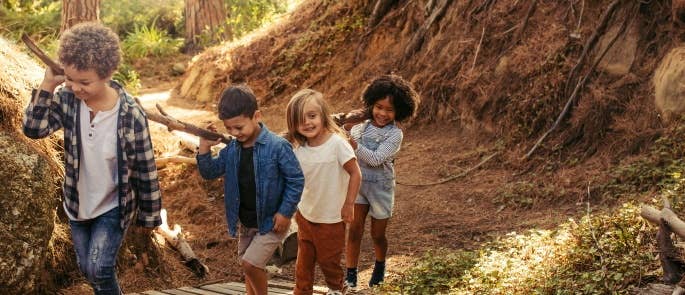
The beginnings of Forest School in the UK as we know it today were in the 1990s, partly inspired by the outdoor pedagogical practices which were already well-established in Scandinavian countries. Forest School practitioners and training centres gained momentum throughout the 2000s in various forms and structures, before the Forest School Association (FSA) was formally established in July 2012.
As the professional body for Forest School, the FSA aims to promote best practice and provide a governing body for training – protecting and communicating the community-agreed six guiding principles of a true Forest School amongst the backdrop of many other outdoor educational settings.
Forest School Ethos and Principles
The vision of Forest School is to enable each participant to have the opportunity to develop themselves in an inquisitive manner and have a positive relationship with the natural world. Forest School places an emphasis on self-reflection, which equips learners with emotional and social skills that can stay with them into adulthood and permeate into other areas of their life.
What makes Forest School different to other forms of outdoor education – such as outward-bound days, general outdoor lessons, bushcraft workshops or groups such as scouts – is that practitioners adhere to six guiding principles which are agreed by the UK Forest School community. You can read about these six principles below, where we also explain what Forest School sessions involve.
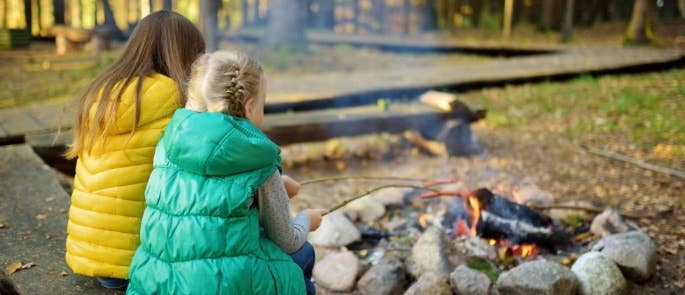
1. Sessions are delivered on a long-term basis
Forest School sessions are supposed to be regular and over a long enough period of time – not just a few one-off workshops. As a minimum, the FSA suggests at least 24 weeks, over at least two terms, at least two seasons and a minimum of two hours per session. However, many groups continue for years. This length of time is required to allow for the establishment of boundaries to feel safe and secure, the development of trust, and the deeply-rooted process of observation and self-reflection that is critical to all forest school sessions, for both practitioner and learner.
2. Sessions should be risk-aware, not risk-averse
Forest School has an emphasis on learning through play, where children have the freedom to try things out. Practitioners suggest playful, meaningful activities which nurture the instinctive human ability to learn through overcoming a risk, challenge or problem. Children may also be taught how to safely use tools like knives and axes for whittling or chopping wood, and how to light and safely be around campfires. However, risk in the context of Forest School is about more than just physical danger of using sharp tools or campfires – it also includes social and emotional risk; for example, through embracing something new or confronting the fear of looking silly.
3. Forest School is invested in holistic development of the participants
Holistic means ‘whole’ – and Forest School is about practitioners enabling the development of the whole person. This includes:
- Emotional development. Periods of reflection are important parts of all forest school sessions and help children to expand their emotional vocabulary and understand how they feel (emotional intelligence).
- Spiritual development. This is not necessarily religious, but refers to having a sense of belonging to the wider world, being part of something bigger than yourself, and your connection to nature.
- Intellectual development. Knowledge is provided in context with situations as they arise and creates a thirst for learning.
- Social development. Consistent meetings with the same group of children means that social connection is gained through shared experiences and goals. Children are able to choose whether to work together or separately.
- Physical development. Both fine motor skills and gross motor skills are developed in the outdoor environment, as well as stamina and positive experiences in ‘bad’ weather.
- Communication and language development. Working together encourages communication and develops skilful expression of thoughts and ideas, as well as the ability to listen to others. Reflection activities increase a child’s ability to understand and describe their internal state, wants and needs.
Forest School practitioners aim to develop these aspects in a low-intervention manner rather than instructing the children to think or act in a certain way. The development is encouraged instead by measures such as raising interesting questions, being a role-model for behaviour, and allowing children to self-discover and self-regulate.
4. Forest School should take place in a natural wooded environment where possible
Embedded within Forest School is awareness and appreciation of the natural world. Sessions are intended to take place in a natural environment, ideally with trees, enabling use and interaction with natural materials in activities. The outdoor environment is key to providing a different situation for children, where the space is contained but not constrained.
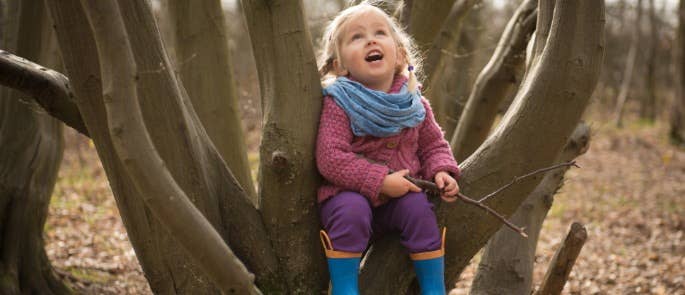
5. Forest School should be run by qualified Forest School practitioners
Facilitating the complex learning opportunities of Forest School and providing supported risk in the outdoor environment to a group of children is a difficult thing to do. Therefore, Forest School sessions need to be run by an appropriately trained individual.
The FSA states that practitioners should hold a properly endorsed Level 3 Forest School qualification, which equips them with the skills required to provide good quality sessions. These include practical skills, first-aid, teaching skills, risk-benefit analysis, how to perform site checks and environmental impact awareness. It also trains leaders in the fine art of balancing guidance and structured activities with the self-learning ethos of Forest School. Practitioners are also required to be very reflective themselves, to continually adapt and change with their group and learn from experience.
6. Forest School is learner-centred with learner-based outcomes
There is no curriculum in Forest School. Rather, learning is intended to be a co-operative process between the practitioner and the participants through a system of observation, reflection and communication. This system enables the discovery and development of unique outcomes which are specific to each learner and may cover any part of the holistic development. One key message is that progress in Forest School is process-based, not goal-based.
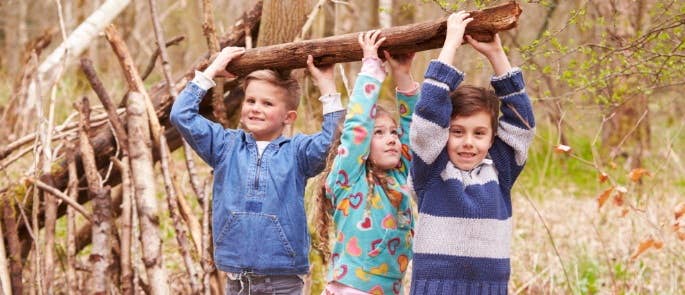
Why is it Beneficial for Children to Attend Forest School?
The benefits of Forest School are linked to the long-term, regular sessions, and echo the holistic development aims in the six guiding principles. Research has shown that children can benefit in a multitude of ways ranging from confidence to social, emotional, intellectual, physical and language development (Murray & O’Brien, 2005).
Case studies have shown children can:
- Develop self-regulation skills.
- Cope with and learn from failure.
- Build resilience (the skill of coping with risk and failure).
- Gain a sense of achievement.
- Increase motivation and concentration.
- Improve problem solving.
- Expand their vocabulary and communication skills.
- Feel empowered and have new perspectives.
- Build positive relationships with adults and peers.
- Have overall improved wellbeing and mental health.
Forest School can increase a child’s confidence and self-esteem through exploration, problem solving, and being encouraged to learn how to assess and take appropriate risks depending on their environment. The use of learner-led outcomes means information is retained better and also generally increases curiosity and motivation to learn in general. This motivation can have a positive impact on attitude to learning in school.
Previously ‘quiet’ children have been shown to improve in their confidence and communication to work with others, and children who were initially un-cooperative learnt that sharing and working together had positive consequences – and increasingly did this (Murray & O’Brien, 2005). Sessions with mixed ages or year groups can allow interactions between older and younger children that do not normally come into contact – allowing opportunities for children to learn from and teach each other.
Learners also gain a respect for nature through many small interactions and noticing changes around them through the seasons. Providing students with an opportunity to appreciate the wider, natural world encourages a responsibility for nature conservation in later life.
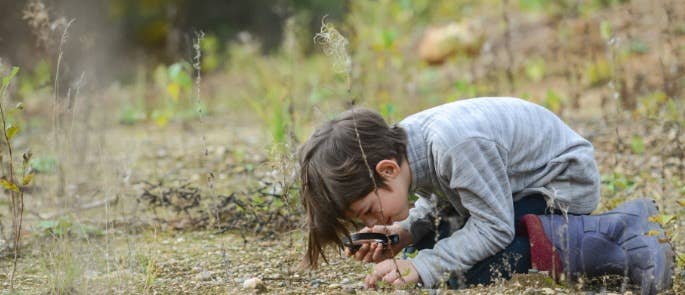
Crucially, many of these benefits can manifest themselves beyond the Forest School environment, known as the ‘ripple effect’ (Murray & O’Brien, 2005). Children may influence their parent’s attitude to the outdoors through their enthusiasm, knowledge and confidence gained in Forest School.
Forest School as Intervention.
Forest School sessions can be successfully used as an intervention strategy for children and young people who are at risk or disadvantaged in social, behavioural or economic ways. Research has shown that disadvantaged pupils who attended Forest School had increased academic attainment and attendance at school in comparison to those who did not attend the sessions (McCree, 2018). Taking a child outside of their normal setting and working on a long-term basis under the Forest School principles gives the child freedom to redefine themselves and try new things.
Additionally, increased communication skills can reduce friction in other aspects of life, and an increased sense of self-awareness allows a child to understand and communicate their needs and wants effectively to others rather than using undesirable behaviour.
Benefits for Children with Special Educational Needs (SEN).
Case studies have shown that children with complex learning difficulties including autism, behavioural difficulties, speech and language difficulties and problems with hearing and vision can benefit from Forest School. A book ‘Forest School and Autism’ by Michael James details the benefits and gives practical advice on this subject.
SEN children tend to respond well because of the multi-sensory and enabling environment of Forest School, where children can explore and take supported risks. Particular benefits include gaining more independence, reducing anxiety and creating a sense of belonging.
How Do I Get Involved in Forest Schools?
If you are interested in your child joining a Forest School you will first need to see if there are any running in your local area. You can search online or check any community leaflets or notice boards. It could also be worth enquiring through your child’s school or nursery as they may have contacts with such groups or employ a Forest School Leader to run sessions for their own pupils.
Once you have found a group, you can check if they are properly endorsed by the Forest School Association by asking the lead practitioner about their accredited Forest School qualifications or searching through the Forest School Association website. Forest School Leaders should hold a Level 3 Forest School Practitioner qualification. If there are no spaces left at the Forest School, you could always see if the practitioner is available to set up another group.
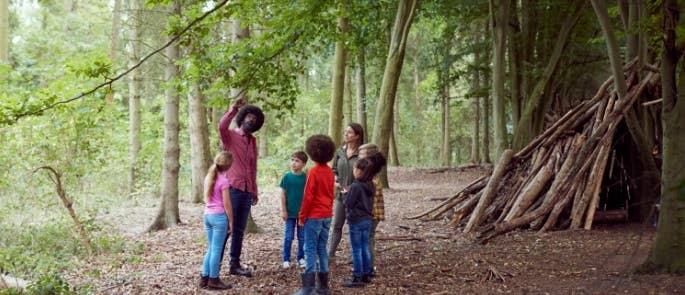
Alternatively, if you are interested in outdoor learning in general, or there are no Forest Schools nearby, you can still take steps to get involved in other outdoor learning opportunities. A good place to start is to find out if your child’s school has an after-school club outside, such as a gardening club. You could also encourage them to take ownership of a small part of your garden, or an indoor house plant if you do not have access to your own outdoor space.
Other non-Forest-School outdoor education sessions include bushcraft sessions, scouts, field work and community groups with an outdoor, wildlife or environmental focus. We also discuss some ideas to encourage environmental awareness for children in our dedicated hub article: Environmental Awareness for Children.
This article has given you an overview of what Forest School is, its foundational principles and the benefits Forest School can provide to learners. There are many steps you can take to get involved, or you could also try other alternative outdoor education ideas to help your child to appreciate nature and encourage self-development.
What to Read Next
- Environmental Awareness For Children: Ideas for Teachers
- Environmental Awareness Course
- Why is Reading Important for Children?
- Education Training Courses
Further Reading and References
In addition to the links in this article, the following resources were used as sources of information:
- Cree, J. & McCree, M. (2012). A Brief History of the Roots of Forest School in the UK. Horizons. Vol 60. Institute for Outdoor Learning. Available from: here.
- Forest School Association (2020). Quality Forest School for All (video presentation). Available from: here.
- McCree, M., Cutting, R. & Sherwin, D. (2018). The Hare and the Tortoise go to Forest School: taking the scenic route to academic attainment via emotional wellbeing outdoors. Early Child Development and Care. Vol 188:7, pp 980-996. Available from: here.
- Murray, R. & O’Brien, L. (2005) ‘Such Enthusiasm – a Joy to See’, An Evaluation of Forest School in England. New Economics Foundation and Forest Research. Available from: here.











